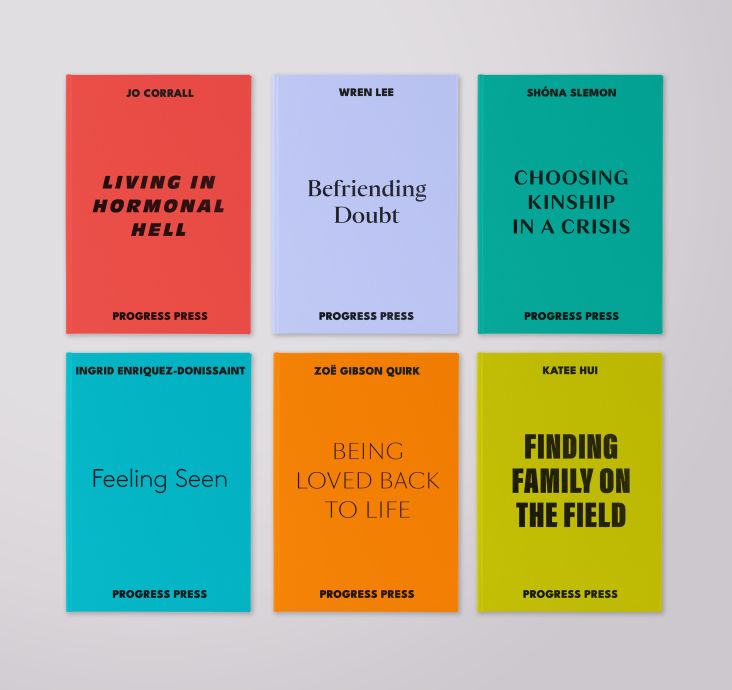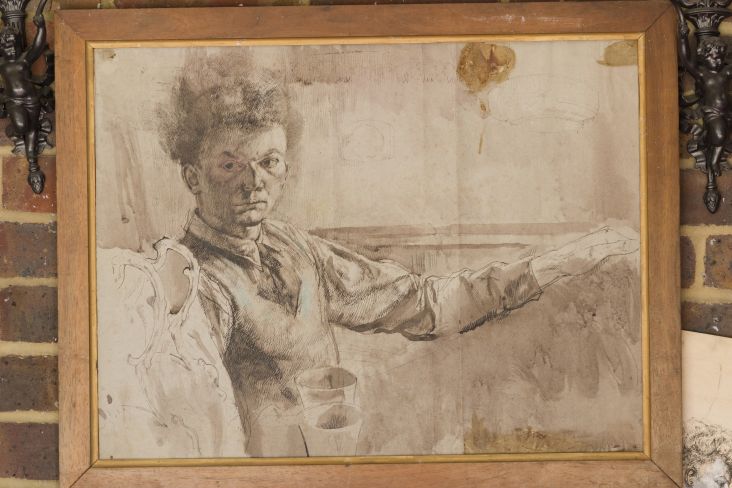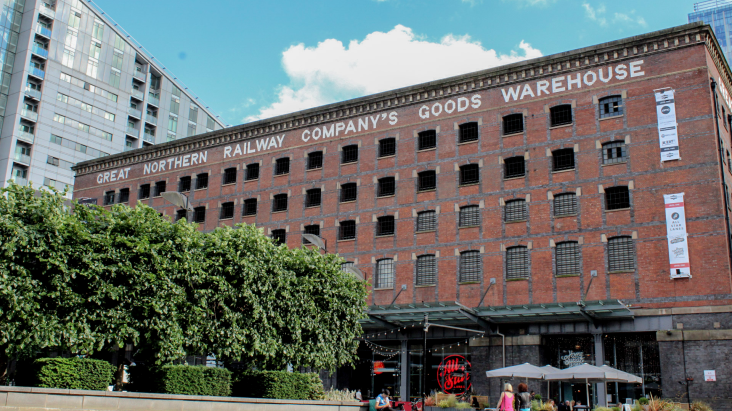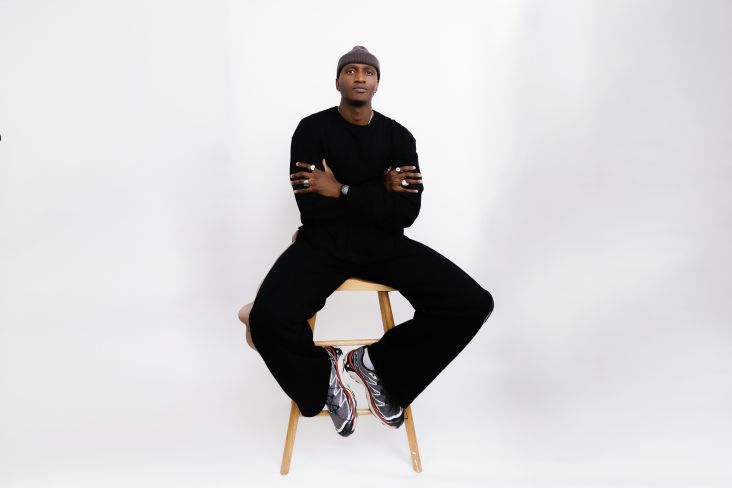Marlon Tate founder Nikos Georgópoulos on how he made his own creative opportunities
After working as an in-house graphic designer for five years, Nikos Georgópoulos felt stuck in a rut. We caught up with him to hear how he made his own opportunities, got crowned a pop star art director, and hacked the industry by creating an agency that does everything differently.

Nikos Georgopoulos (© Marlon Tate/Myrto Tzima)
The last few years sound like a whirlwind of success for art director Nikos Georgópoulos. He's founded the first agency with offices in space, Marlon Tate, scooped a Red Dot Communication Award, and, perhaps most importantly, started making the work he's always wanted.
His life wasn't always like this, though. As he tells Creative Boom, until relatively recently, he worked in-house as a graphic designer and came to blows with managers as he tried to convince them to take a risk on his ideas. It's a familiar gripe in the design industry, so how did Nikos turn his fortunes around and start making what he wanted on his terms? Simple: he created his own opportunities.

Nikos Georgopoulos (© Marlon Tate/Myrto Tzima)

Nikos Georgopoulos (© Marlon Tate/Myrto Tzima)
Of course, this sounds easier said than done. And to begin with, it even came hard for Nikos. "At the beginning of my career as a 23-year-old art director in London, I really struggled to find creative opportunities to demonstrate my creativity," he reveals. I always had a vision and a passion for my work and wanted to create provocative, idiosyncratic work that meant something to me and others.
"I don't mean this as a slight towards in-house graphic designers, but the reality is, designing a glossy marketing brochure (and keeping it on brand) for a corporate conference is probably not going to creatively satisfy you – if it does, that's great, but the reality of working in-house in a company is that you're working towards very different criteria."
Changing direction
After slogging it out as an in-house graphic designer for five years while freelancing for private clients at night, Nikos felt burnt out. He realised that he had to consolidate his two separate careers into one if he was going to achieve his dreams.
"Having said all that, despite the corporate environments and reformist irrelevant line managers, I learned a lot, met lots of interesting people, and had fun with my fellow co-workers," he adds. Practical jokes were a way of maintaining our sanity or perhaps employing our underused creativity."
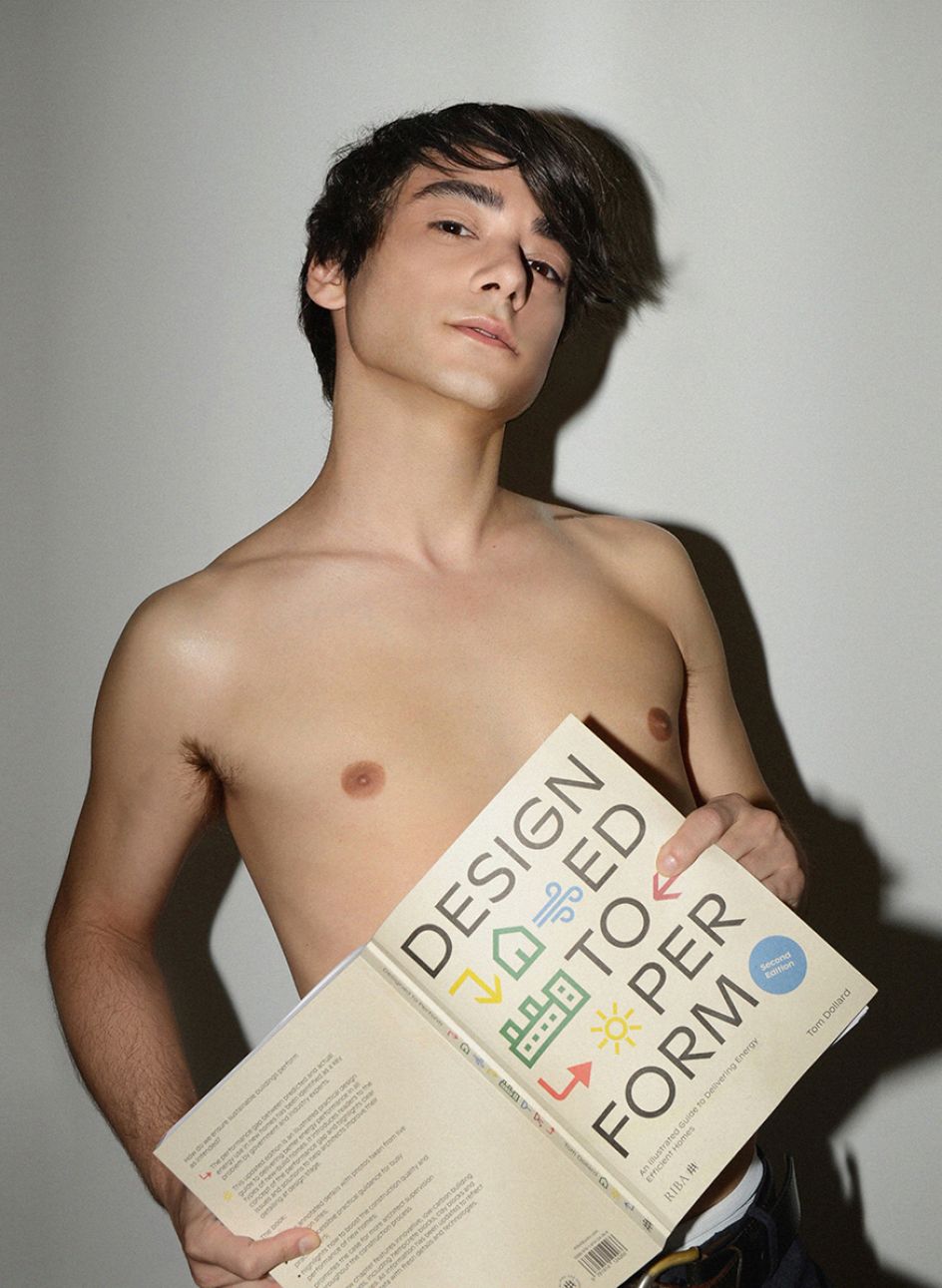
Nikos Georgopoulos: ‘Designed to Perform’ aka ‘the sexiest book on the topic of sustainability’ (© RIBA/Pollard Thomas Edwards/Tom Dollard/Marlon Tate)
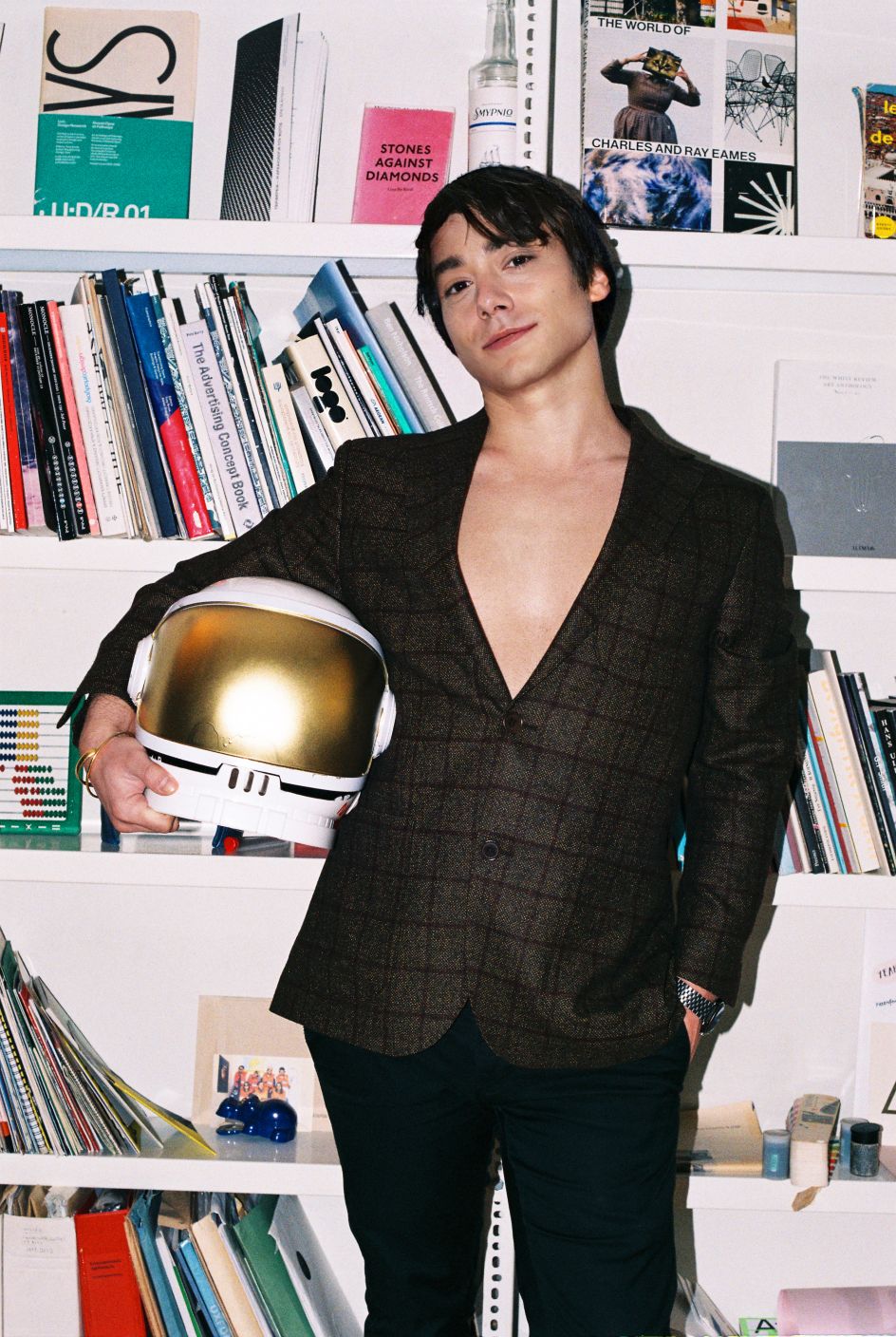
Nikos Georgopoulos (© Marlon Tate/Myrto Tzima)
These feelings of frustration were ever-present, though, constantly simmering away in the background. There was no singular moment that made Nikos realise he needed to break out and do his own thing; the urge was there all along. "It really was imperative for me that I make a big bang, whatever the cost," he says.
"I remember watching True Detective season one, right when it came out, with my flatmate at our place in Shoreditch and thinking, 'Boy, McConaughey really went for it'. What an extraordinary move."
I said: 'fuck clients; let's work for a brand that no longer exists in the real world but thrives in an alternative timeline!'
Nikos was about to make an extraordinary move of his own in the shape of identities for fictional brands that exist in alternative timelines. It would prove to be an idea that would put his name on the map and tempt clients to commission him for the kind of work he wanted to make. It all came from his frustration with senior managers at his day job who rejected his ideas.
He explains: "Adam Carouso, the famous British architect, once said: 'We, as architects, spend an awful lot of time trying to convince people to do things that they really don't want to do.' On that basis, I said: 'fuck clients; let's do something for a fictional client. Let's work for a brand that no longer exists in the real world but thrives in an alternative timeline!'
Time travel branding
The first chapter of this trilogy was the XENIA project. This fictitious identity saw Nikos and photographer Polly Brown travel back in time to change the past by creating a look for the very real Greek accommodation infrastructure project. In our universe, this construction programme never got a proper brand identity, leaving room for Nikos to slip in and use his imagination.
"I created the new branding, logotype, marketing material and amenities, and we photographed the fictional branding within a past that never happened," he says. "Never forget this: an alternative past has the opportunity to become a brilliant future. Fictitious but brilliant."
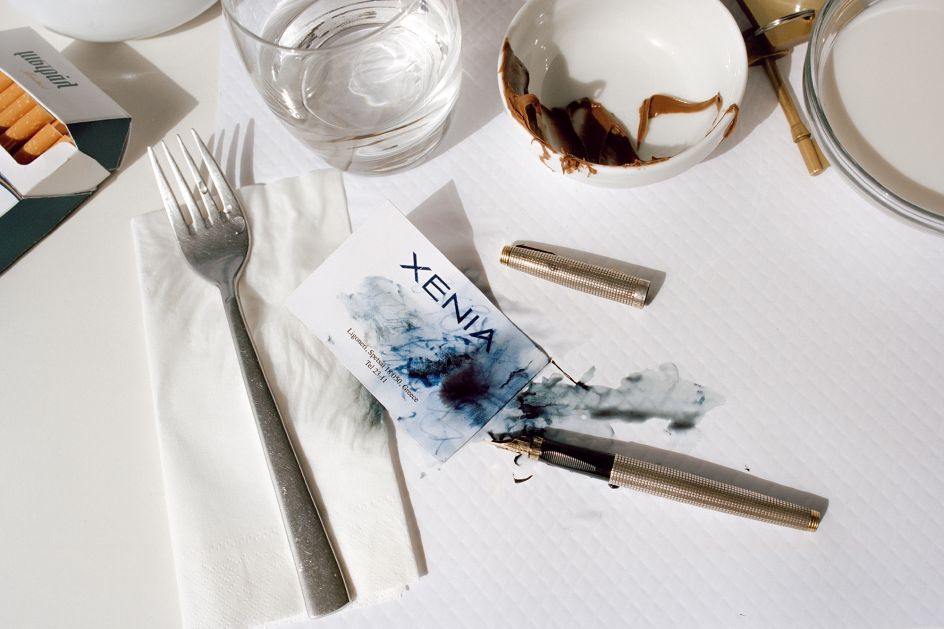
Time travel branding/XENIA (© Nikos Georgopoulos/Polly Brown)

Time travel branding/XENIA (© Nikos Georgopoulos/Polly Brown)
In the real world, the trilogy of time travel brands created a bright future for Nikos himself. "I never thought that the idea I had for this trilogy would influence my career the way it did," he says. "There is a Before Time Travel Branding and an After Time Travel Branding for me, and it's like night and day."
Having worked in-house in the magazine and architecture industries and set himself on a certain trajectory, Nikos suddenly found himself presented with a dazzling new array of opportunities. "It's just profound," he says. "This project kick-started a new chapter in my career because people loved it. It gave me credibility and also highlighted, I think, my talent for storytelling. It really gave me the confidence that I can do whatever I have imagined."
In addition, the XENIA project also made Nikos realise that he could create a project as a creative director that blurs storytelling and art direction. "The whole project opened this amazing possibility for me to blur the boundaries between branding and fiction, which Marlon Tate is very much rooted in. It was extremely hard to pull it off, but it really paid off."

Time travel branding/XENIA (© Marlon Tate)
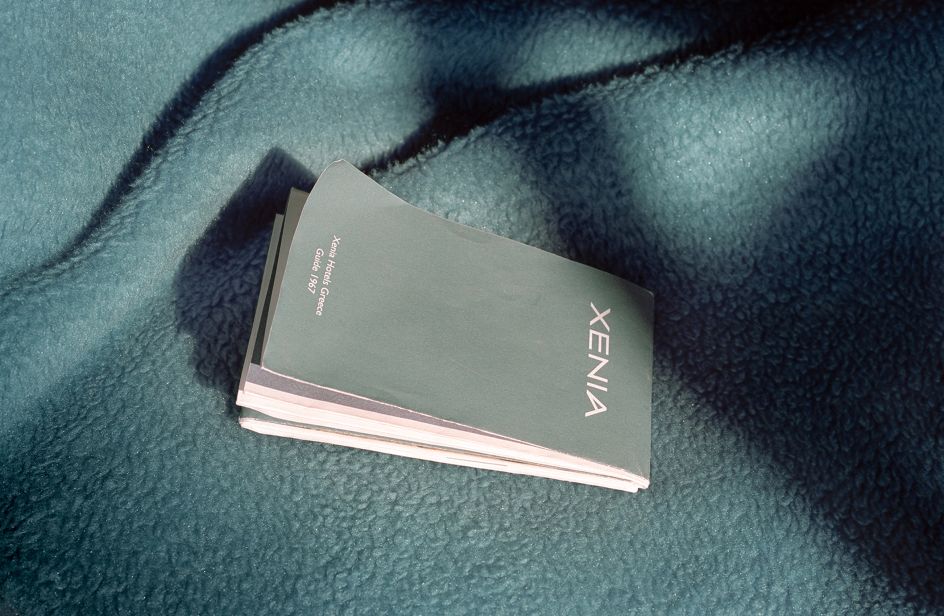
Time travel branding/XENIA (© Nikos Georgopoulos/Polly Brown)
And pay off they did. Even after the first chapter of the time travel branding trilogy was presented at the prestigious ATYPI in New York, people were talking about the surreal element of his work. Soon, Nikos was being interviewed by the likes of Vogue, Etapes, and Wallpaper magazine, not to mention many other non-English publications. The Brand Identity would even go on to brand Nikos himself as a 'pop start art director'.
And the opportunities kept on coming. London College of Communications appointed Nikos as a lecturer, and surreal narrative-driven commissions started rolling in. "In 2020, I branded Greece's first co-living brand as an imaginary country; in 2021, I launched East London's biggest urban regeneration project as a festival of electronic music; and as a natural progression, in 2022, I put together a team, installed myself as Creative Director and launched my own agency with offices in Athens, London, Jupiter and Mars (the last two offices are fictional)."
Creating Marlon Tate
The agency in question is the renowned Marlon Tate. Famous for blurring the lines between graphics and fiction, Marlon Tate first became a solid idea in Nikos's mind during the first lockdown four years ago. Riding high on the attention of the time travel branding trilogy and the Wallis Road campaign, he suddenly found himself with time to reflect on his career so far and pinpoint what interested him.
"I went back to my roots in pop culture, MTV and SoCal pop punk," Nikos reveals. "I wrote lots of texts, and slogans about what the tone of this new agency would be. Then, I hired my first designers via Zoom. I also enlisted my parents' secretary in Athens, who helped with new business requests, and I also worked with freelancers to ensure briefs were delivered on time. It was overwhelming and exciting as never before. It felt like a coming-of-age film. It still does, to be honest."

Marlon Tate: Company photo (© Marlon Tate/Alina Lefa)
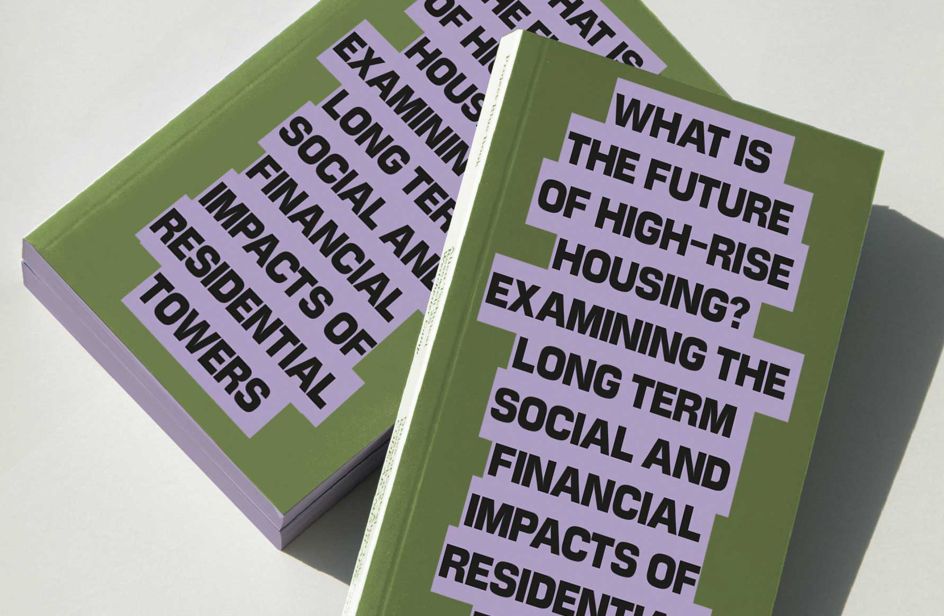
Marlon Tate: ‘What is the future of high-rise housing’(© London School of Economics/Pollard Thomas Edwards/Nikos Georgopoulos)
Today, Marlon Tate is known as a branding agency that creates narrative-driven identities and advertising for exciting brands by seamlessly fusing fiction and surrealist storytelling. It's an approach that the agency even applies to itself. "Our name doesn't mean anything — it's fiction," Nikos laughs. "It literally comes from Marlon Brando and Sharon Tate!"
As for its offices, Marlon Tate currently operates out of Athens and London, plus Jupiter and Mars. This gives clients a sample of the agency's surrealistic approach, but it also acts as a humorous jab at all the agencies out there that claim to have offices in the likes of New York, Milan, and Shanghai.
"Everything is kind of different about Marlon," adds Nikos. "Recently, we created a self-promotional aluminium vacuum-sealed press kit to let journalists know who we are and what we do while at the same time promoting our talent in storytelling."
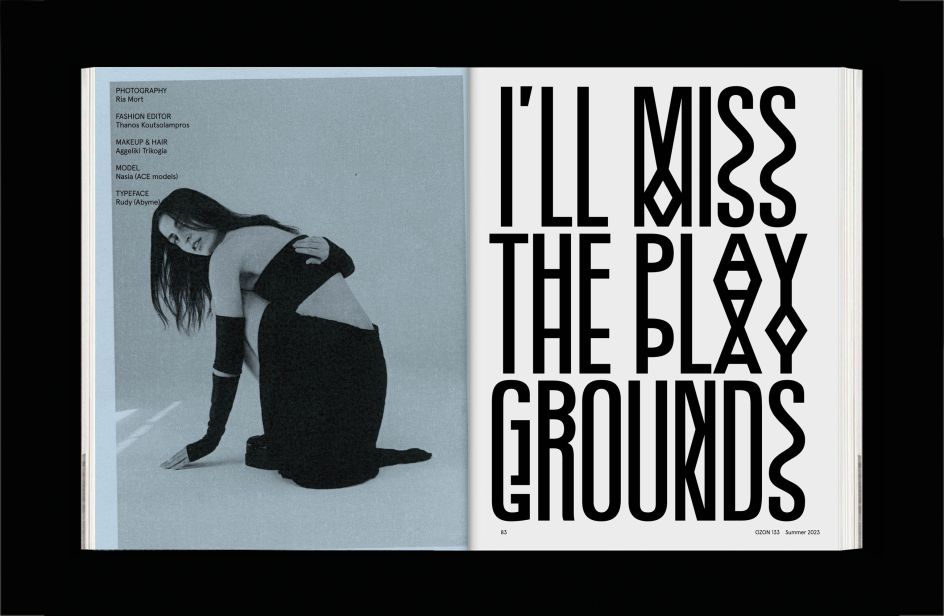
OZON Magazine issue 133 (© Marlon Tate/OZON Magazine)
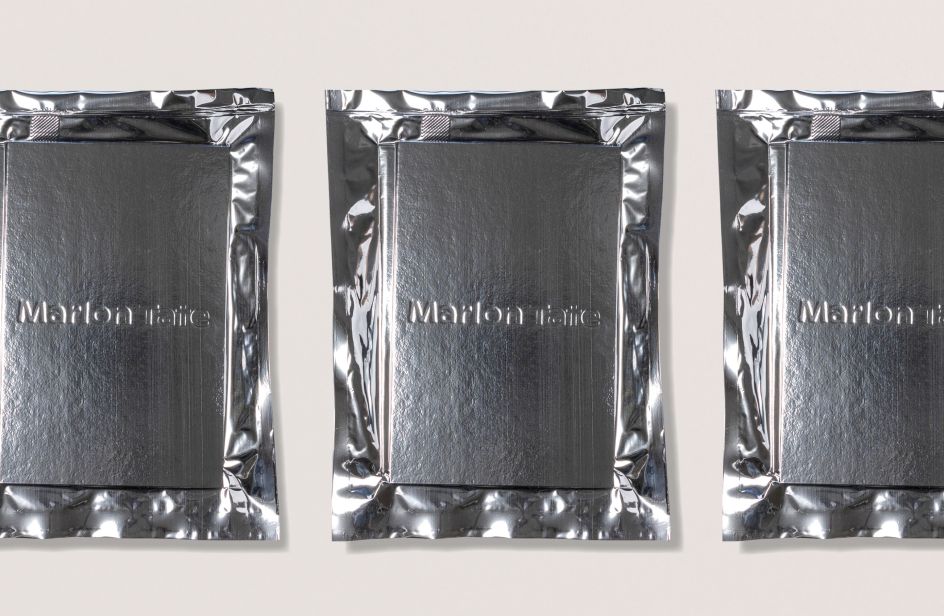
Marlon Tate promo kit (© Marlon Tate)
He adds, "Our idea was to create a press kit that could have been posted from outer space. By drawing upon the food packaging NASA creates for astronauts, we created vacuum-sealed space bags containing a newspaper with fictional news and ads for imaginary products. We introduced ourselves as the first agency to open offices in space – or simply as an agency of creativity and talent that is literally out-of-this-world."
Never forget this: an alternative past has the opportunity to become a brilliant future. Fictitious but brilliant.
It's out there, but it's an approach that works. Since its creation, Marlon Tate has been nominated for the Alan Davidson Award for Storytelling, written and directed a surreal ad for Vakalo, art directed the sexiest book on the topic of Sustainability by RIBA, and even written and directed its own Instagram reality show, Who the FFFF is Marlon Tate?
All of these career highs aside, though, Nikos's proudest achievement so far with Marlon Tate is "preserving and cultivating the space that's in between insane and insecure."
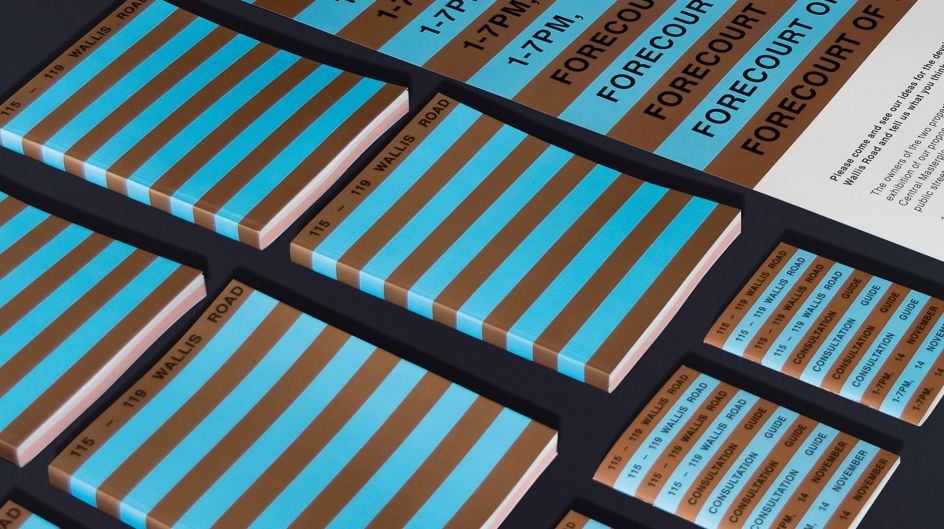
Marlon Tate: Wallis Road (© Pollard Thomas Edwards/Nikos Georgopoulos)
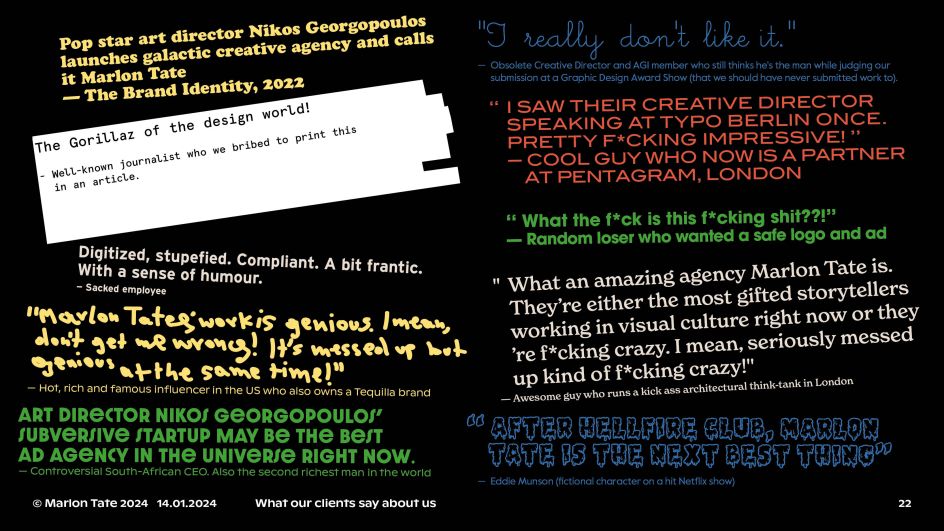
Marlon Tate: ‘What clients say about us’ slide (© Marlon Tate)
Nikos's story is sure to resonate with creators who feel frustrated and capable of producing more than is currently asked of them. So, what should people do if they want to follow in his footsteps? "Don't take no for an answer," Nikos concludes.
"Don't follow the money. Follow your dreams. If no one allows you to do what you love, use your creativity to create your own opportunity. Hack the industry. Prove them wrong. Hit 'em with an attitude (or with a look).
"Nothing is really impossible if you bend the rules of physics. Content is king. Be persistent but also patient. Be passionate but also strategic. Be explosive but also professional. Have a vision, but also be flexible. Become sensational. Getting there is not the tricky part; you just have to close your eyes and imagine it!"
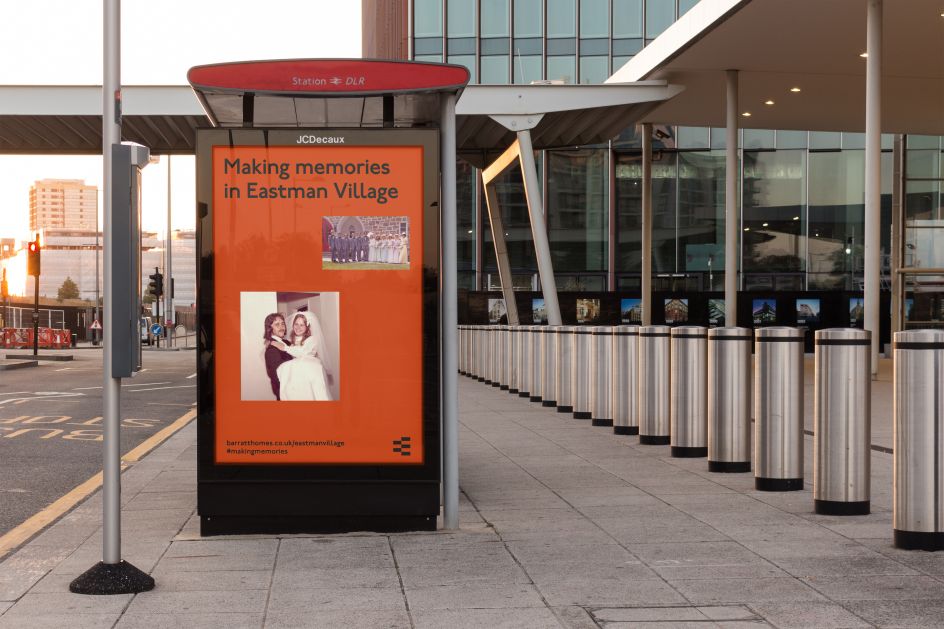
Marlon Tate: Eastman Village (© Pollard Thomas Edwards//Nikos Georgopoulos)
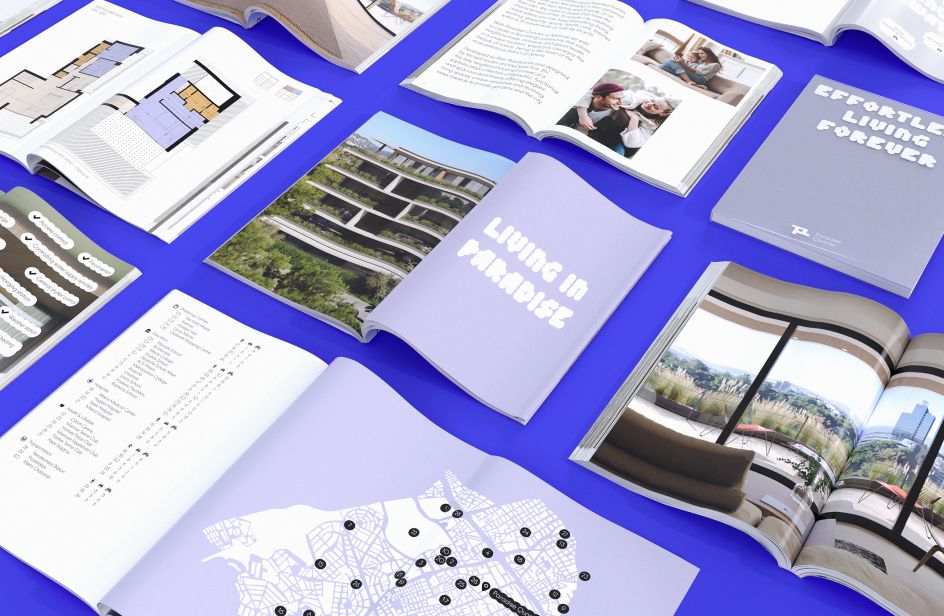
Paradise Quarter (© Marlon Tate)
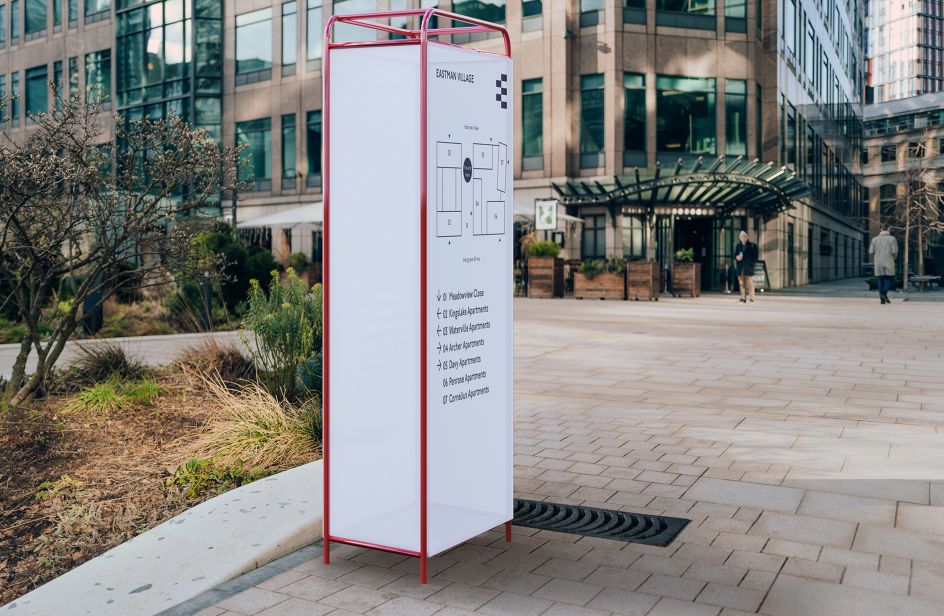
Marlon Tate: Eastman Village (© Pollard Thomas Edwards/Nikos Georgopoulos)








](https://www.creativeboom.com/upload/articles/86/862919952c0ad18439004228895a431dc6e45ffc_732.jpg)
